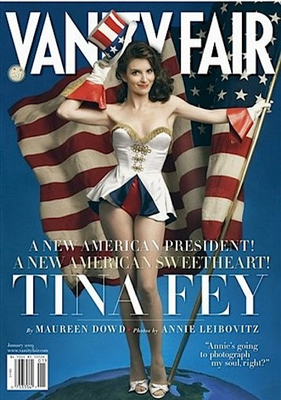 by Savannah Grandfather
by Savannah Grandfather
A Really Open Conversation:
[Via A Journey In Social Media]
This is the first recession where many employees have actually had an open forum to discuss decisions. Some companies are finding out the benefits of just such a conversation, although it goes against some standard viewpoints.
Here is an example of how a company has used online technologies to not only inform its employees but also to make changes in its way of doing business.
I discussed transactional versus transformational leadership a few days ago. Transactional works fine when things are static. But in the rapidlychanging world we inhabit now, transformational leadership is called for. Here is how an organization can move to transformational leadership
As The Economy Slows
Like any other company, we’re tightening up the belt a bit as we head into a most decidedly unpredictable economic environment.
But, this time around, we’ve got our internal platform EMC|ONE. And we’re using it in some pretty interesting ways to share the news, discuss it, and — hopefully — get back to business sooner than later.
Spontaneous Vs. Planned
The first memo came out in a traditional way — there was a minor change to our vacation policy to keep the amount of carryover vacation down to a manageable number. Not a big deal in the broader scheme of things, at least the way I think about these things.
But a couple of spontaneous discussions emerged on the internal platform, right out there for everyone to see. A few people were (ahem) rather pointed in their thoughts about this particular change in vacation policy.
Some people were quite upset regarding the inconvenience involved — they had made plans far in advance, which were now impacted. Others had particular work-related situations that didn’t make it easy to burn off enough vacation in time — they were concerned about losing a valuable benefit. Still others felt free to spout off a bit — ill-advised in any public setting, but there you had it.
All very valid concerns.
Before too long, we had over 10,000 views on the threads, and hundreds of comments. Over time, though, more moderate voices joined the discussion, and softly rebuked some of the more vocal participants.
These more moderate people said that the economy was getting tough, and the company needed to look at every reasonable avenue for lowering expenses. If this meant a small change in the vacation policy, fine — better than some of the alternatives.
Fine, came back the collective response — then the communication should have been worded with this in mind. Be open and transparent, they said — don’t try to whitewash the situation. The executives in charge of the policy (formation and communciation) got to see this all unfold in realtime before their eyes — warts and all.
Very useful feedback, I might offer …
Employees know what is going on so trying to hide or sugarcoat it can be counterproductive to the intent of a decision. But more importantly, they are enmeshed in a social milieu that is going to discuss almost any change. By making these discussions open, not only does the bitching become apparent but the ability to use social mores to constrain behavior can come into being.
So, after an intense discussion, the community realizes that this is a sign of belt-tightening and that the consequences could be far worse without it. Fine, but then the community wants to be treated with openness and wants to be told the real explanation.
What is unsaid but probably relevant is that the employees might have gotten to the same point anyway, but much more slowly and with a lot more wasted effort. Online, all it takes is for a few to see the best viewpoint and then everyone can see it within a very short time. It is not required for the information to slowly makes its way along the nodes of the normal social network.
One person invents a new idea or formulates a special viewpoint. They post it and everyone sees it in real time, not just the few who happen to talk with this person.
The rate of diffusion of innovation and new ideas is tremendously enhanced using online technologies.
So an open conversation has not only resulted in all sides learning something new that will now color many of the subsequent conversations. Maybe by giving people more control and information, the organization can exert transformational leadership in ways helpful to all during times of excessive change.
This can be disruptive to everyone, especially managers who are used to living in static times and using transactional leadership.
You know, this sort of experience can be thought of as a “moment of truth” in any social media journey.
You wanted an open discussion — well, you’ve got one! Now, what are you going to do about it?
Seriously, though, the company’s management would have been well within their rights to yank the whole discussion right then and there. But — no — we all found this extremely fascinating.
And the discussion turned to “how do we use this platform to help communicate going forward?”
So the decision is made to be expand the use, not contract it, of this new method of conversing within the organization. The speed by which all this happens can be very troubling to an organization used to old style communication.
Look, any time you have to share disruptive news with your workforce, there’s an inherent disruption.
People want to ask questions, discuss among themselves, share perspectives. It’s a natural human reaction — you have to process things a bit before you can get back to work.
Well, using the online platform, we seem to be getting through that introspection phase far faster than before. Anyone can see the memo, and what everyone else has already said about it. Anyone can leave their thoughts and concerns as well — all in about 3 minutes flat.
No need to wander around the building, finding people to talk to. Or getting on the phone to discuss this with your friends. Or to immediately schedule a meeting with your manager to discuss pronto.
Sure, there are people who are going to want to do some of this traditional processing, but — as of today — the online platform is where people appear to be doing the majority of this “processing” — and it’s all there for everyone to see — including our executive management.
Finally, executive communications is not a precise art. Getting realtime feedback on how you did in crafting the message is valuable feedback for any executive. And you can find out pretty quickly just how well you did, and how to do better next time.
If you want to, that is :-)
Transactional leader would not want to use this technology because there is no inherent carrot/stick way to control the employees. But transformational leadership trusts the community to control itself, to provide its own motivations. With a solid example of the community doing just that, the leaders of the organization decide this is a good thing and will expand its use. Transformational leadership by its definition.
Being Thoughtful
So, based on that spontaneous experience, we’re going to be trying a few new things in the future. We’d like to integrate the use of the platform into the broader communication experience.
First, we’re going to proactively “start the discussion”. When a potentially controversial memo comes out, we’re going to post in on the platform, and explicitly invite people to discuss.
Second, we’re going to be as tolerant as we can be when people feel like venting a bit — and then gently reminding them privately if they’re being a bit too, well, passionate :-)
Third, we’re going to spend a little time and summarize the more interesting themes back to exec management — here’s what people are saying that we think is valid, go to this link if you want to see it all unfiltered.
They are creating an avenue for a lot of tacit information that remains hidden not only from many other employees but also from management to become explicit and to inform the community.
As transformational leaders, they realize they might not have the best answers but will trust the organization to help create the best answers. They will permit social mores that we have evolved to control the conversation rather than an authoritarian perspective that could be counter-productive.
The Bottom Line
It’s funny — having a social platform ingrained in your company culture is changing how we do things. I can remember a time not too long ago where this sort of thing would be entirely out of the question.
But now it seems like the most natural thing to do — invite people into the discussion.
This stuff isn’t about technology, it’s about changing the way you do business.
And this seems like a perfect example to me.
This company is developing transformational leadership which will be able to help it deal with the chaotic times we are living in. It has the tools to help it survive with fewer disruptive upheavals than if it stuck with transactional leadership.
A great example of how a large company can begin to alter its leadership style, its very way of doing business. This is really its best hope. Organizations that still use a management style based on stasis, that use transactional leadership, will have a very hard time surviving the hurricane of change we find ourselves.
Technorati Tags: Social media, Web 2.0
 by bobster1985
by bobster1985







